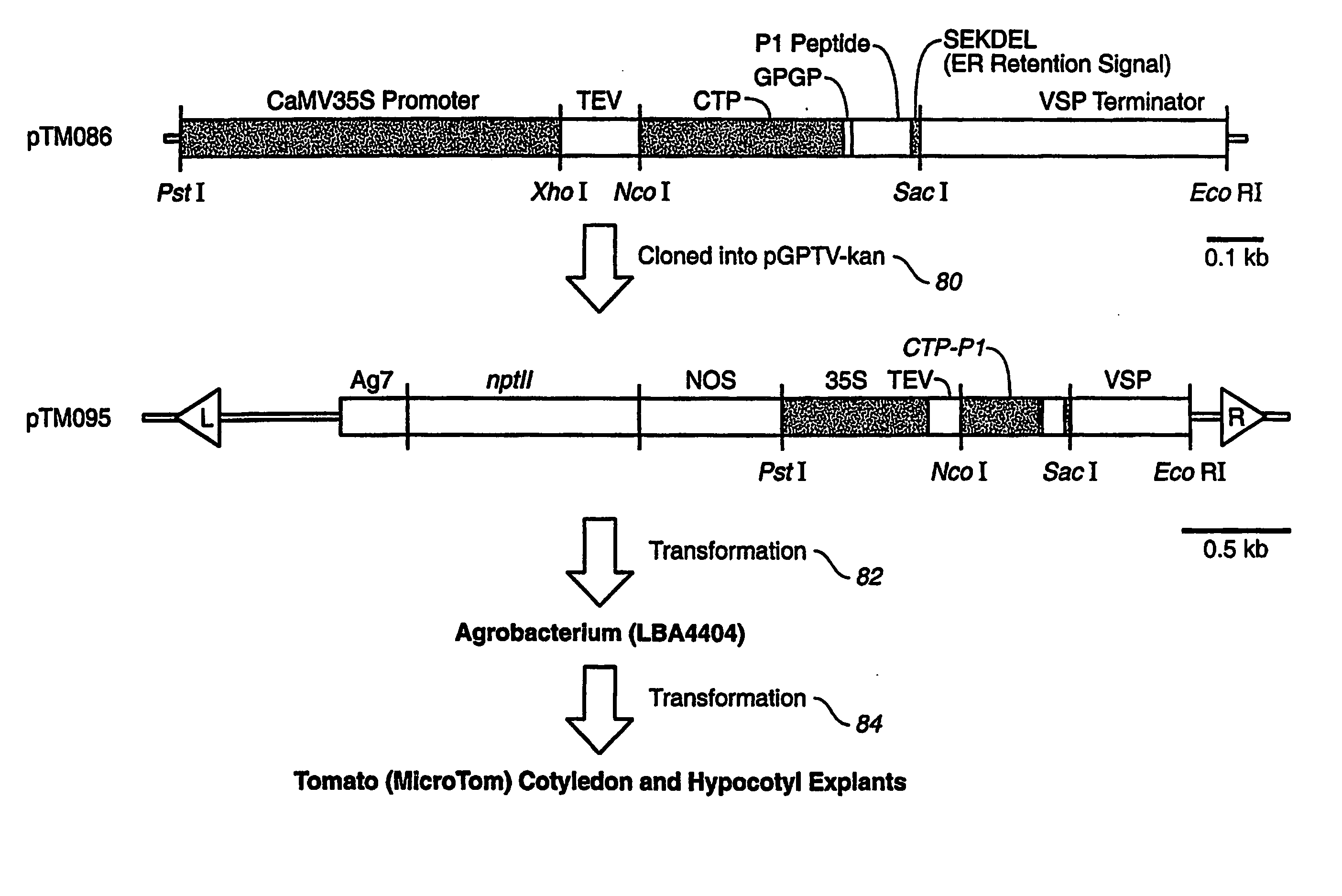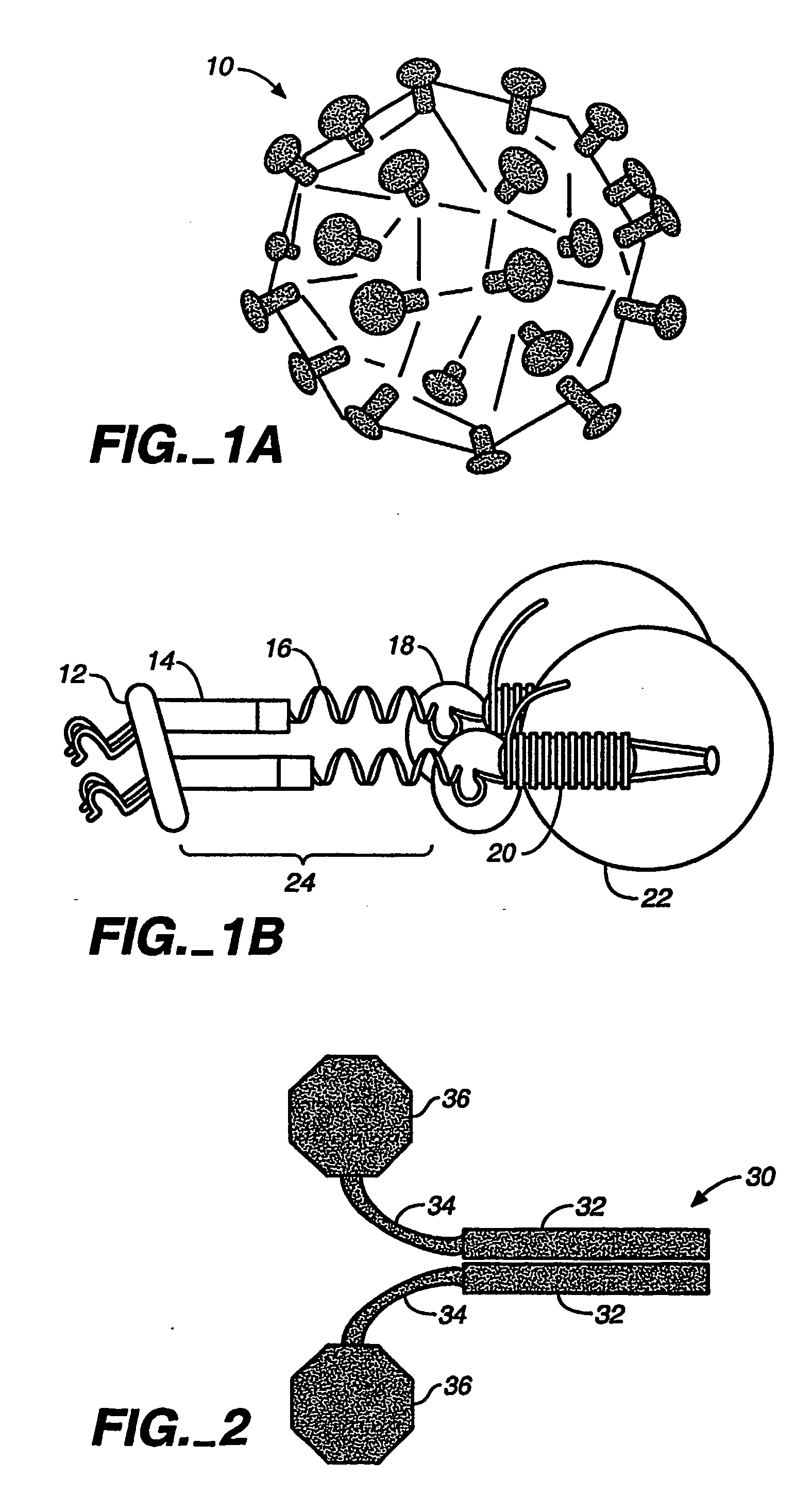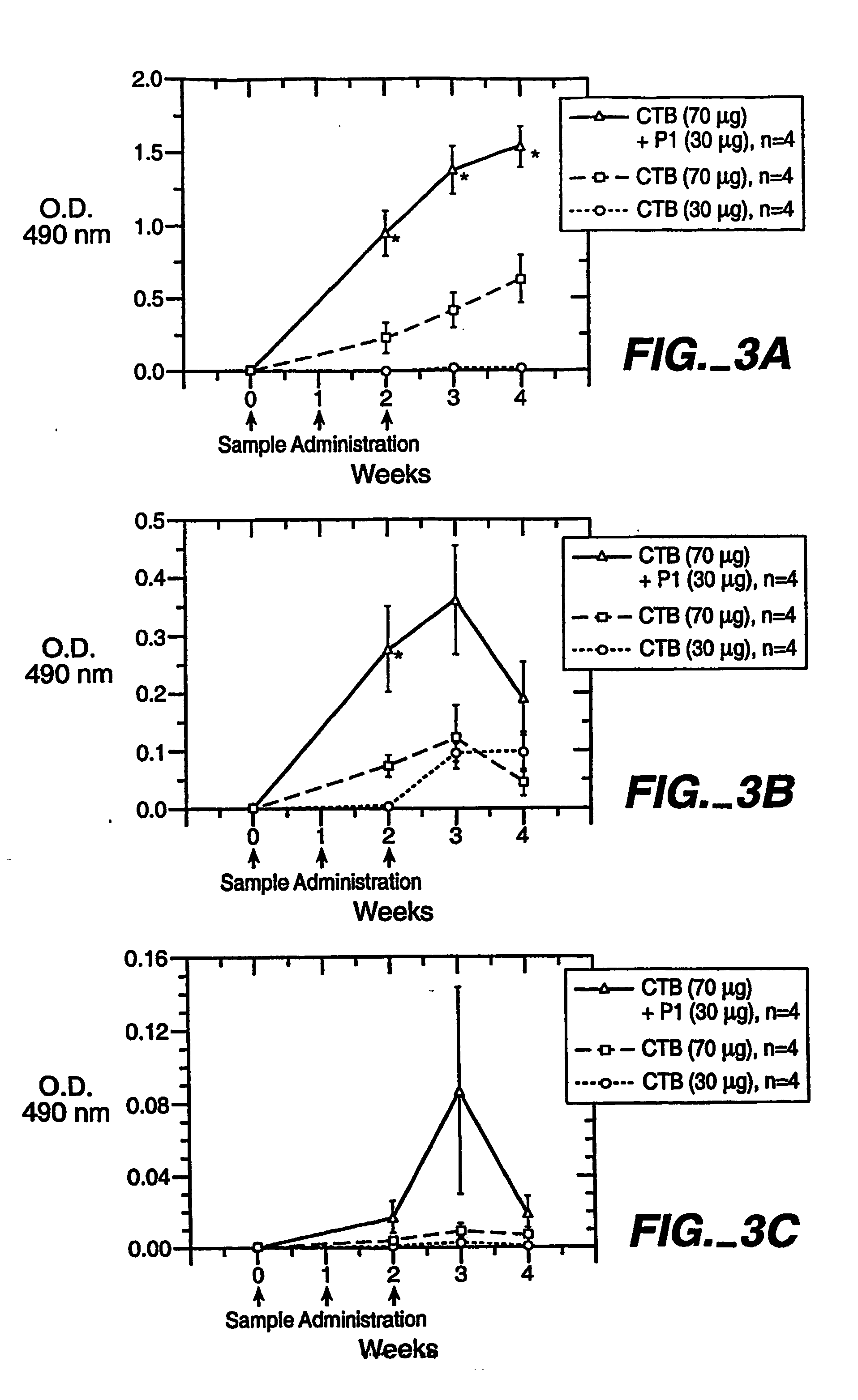Composition and method for enhancing immune response
a technology of immune response and composition, applied in the field of composition and method for enhancing immune response, can solve problems such as the risk of infection transmission by injection, and achieve the effect of reducing the use of nicotine in living organisms
- Summary
- Abstract
- Description
- Claims
- Application Information
AI Technical Summary
Benefits of technology
Problems solved by technology
Method used
Image
Examples
example 1
[0033] Example 1 demonstrates that adjvuant peptide enhances immune responses against cholera toxin B subunit by mucosal co-administration of adjuvant peptide and cholera toxin B subunit. Synthetic adjuvant peptide (SEQ. ID. NO: 3) with a C-terminal CONH2, was synthesized by Eurogentec (Belgium) and by the Protein Chemistry Laboratory at Arizona State University. A cystine residue was added to the beginning of SEQ. ID. NO: 1 to allow for dimerization (residue 649). Cholera Toxin B (CTB) subunit was chosen for co-administration because it is non-toxic and it is a strong mucosal adjuvant. Additionally, CTB binds to GM1 ganglioside whereby being able to target the fused antigen to mucosa.
[0034] Synthetic adjuvant peptide 30 micrograms (μg), adjuvant peptide plus Cholera-Toxin B subunit (CTB) (30 and 70 μg, repsectively), and CTB (70 μg) were given orally to CD1 female mice (6-7 weeks old) by a gastic feeding tube on day one, eight, and fifteen. The serum, fecal pellets and vaginal sec...
example 2
[0040] In example 2, plasmids were created for the co-expression of adjuvant peptide and GFP in transgenic plants for oral delivery. FIG. 8 depicts the synthesis of a plant-expression optimized DNA molecule encoding for an adjuvant peptide-GFP fusion protein. The sequence coding for adjuvant peptide was inserted behind a DNA spacer encoding a Glycine-Proline-Glycine-Proline (GPGP) hinge. A BsrGI-SacI fragment of this plasmid was cloned in behind a 35 S Promoter. A PstI-EcoRI fragment contains the plant expression cassette. FIG. 8 represents a model delivery system for using fusion proteins to deliver cargo proteins to an animal cell.
[0041]FIG. 9 depicts maps of plasmids comprised of DNA sequences of CTB, P1, CTB-P1 fusion and for the plant-expression of the CTB-P1 fusion protein. A plant-expression optimized DNA molecule encoding for P1 peptide was synthesized. The sequence was inserted behind a portion of the gene encoding the C-terminus of the CTB molecule behind a DNA spacer enc...
example 3
[0048] The flowchart in FIG. 12 depicts purification protocol of CTB-P1 fusion protein produced in E. coli. Resultant fractions from this protocol were resolved by SDS PAGE on the right panel. The following were placed in the first three lanes: Lane 1: molecular weight standards; Lane 2: a mixture of denatured (lower monomeric band) and non-denatured commercially available CT-B (pentameric upper band); Lane 3: whole cell extract from an IPTG-induced E. coli.
[0049] Following sonication and centrifugations, in step 70, extracts are separated into soluble (Lane 4) and insoluble (lane 5) fraction. The insoluble fraction, in step 72, is solubilized in 6.5 M urea and affinity purification on nickel column in step 74. The eluate (Lane 6) is more than 90% pure and can be subjected to dialysis promoting the refolding and oligomerization of the monomeric CTB-P1 fusion protein. By its mobility we conclude that the fusion protein can assemble into pentamers.
[0050] Finally, Eluate was dialyzed...
PUM
| Property | Measurement | Unit |
|---|---|---|
| structure | aaaaa | aaaaa |
| antibody titers | aaaaa | aaaaa |
| length | aaaaa | aaaaa |
Abstract
Description
Claims
Application Information
 Login to View More
Login to View More - R&D
- Intellectual Property
- Life Sciences
- Materials
- Tech Scout
- Unparalleled Data Quality
- Higher Quality Content
- 60% Fewer Hallucinations
Browse by: Latest US Patents, China's latest patents, Technical Efficacy Thesaurus, Application Domain, Technology Topic, Popular Technical Reports.
© 2025 PatSnap. All rights reserved.Legal|Privacy policy|Modern Slavery Act Transparency Statement|Sitemap|About US| Contact US: help@patsnap.com



